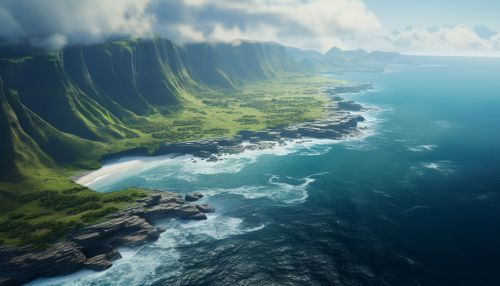Oceanic plateau
Overview
An oceanic plateau is a large, relatively flat elevation that is higher than the surrounding relief with one or more relatively steep sides. These formations are typically formed by volcanic activity and are found in various parts of the world's oceans. They cover an area of several hundred to several thousand square kilometers, and their formation is still a subject of research in the field of geology.


Formation
The formation of oceanic plateaus is a complex process that involves a variety of geological phenomena. Most oceanic plateaus are believed to be formed by mantle plumes, large upwellings of abnormally hot rock within the Earth's mantle. As the mantle plume reaches the Earth's crust, it erupts as a flood basalt, creating a large plateau.
Characteristics
Oceanic plateaus are characterized by their large size and flat topography. They are typically composed of basalt, a type of volcanic rock, and can be several kilometers thick. The top of the plateau is often covered by sediment, which can provide valuable information about the history of the plateau and the surrounding ocean.
Examples
There are numerous examples of oceanic plateaus around the world. Some of the most notable include the Ontong Java Plateau in the Pacific Ocean, the Kerguelen Plateau in the Indian Ocean, and the Caribbean Plateau in the Atlantic Ocean.
Research and Exploration
The study of oceanic plateaus is a key area of research in the field of geology. These formations provide valuable insights into the Earth's geological history, including the processes of plate tectonics and mantle plume activity. They also offer a unique environment for the study of marine life, as the flat topography and nutrient-rich waters of the plateaus often support a diverse range of species.
